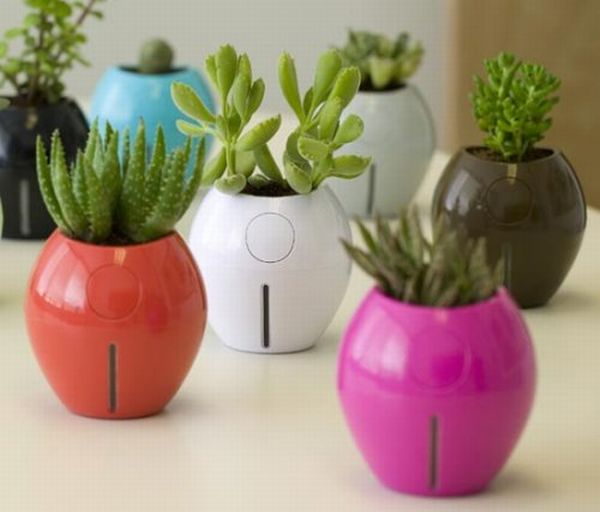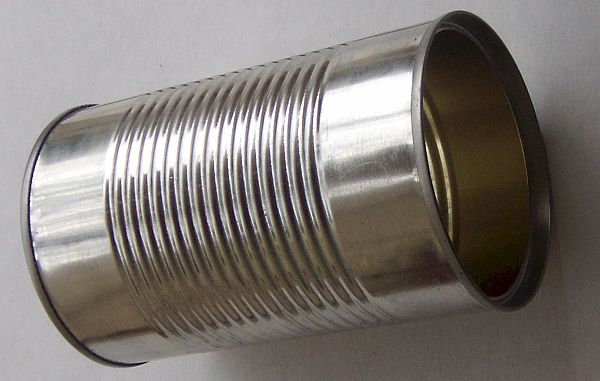
If you going on a holiday or don’t have much time to give your gardening ideas a vent, then you should try making a self-watering planter. It is easy to make if you have the materials handy. Getting the materials is also not very difficult. You can practically grow any vegetable or flowering plants in them. Its fun and useful. A self-watering planter is usually designed around a model which has a water chamber below the growing chamber. The two chambers are separated by a rack like structure.
Difficulty level : Easy
Time required : About 2 hours
Resources required :
- Large plastic storage bin
- Watering pipe made of plastic
- Snack tray, pond basket or strainer to be used for “soil foot”
- Wooden blocks or anything that can be used to provide support
- Mesh, burlap or landscape fabric can be used to screen the watering pipe
- Screws or staples
Estimated cost : $10 approx
Instructions :
1. Cut the lid so that it fits at the bottom of the container and make a hole in the centre of the pond basket. Remember to keep some space in one corner to attach the watering pipe.
2. Attach support to the whole system using wood blocks. Use screws to fix the wooden blocks.
3. Cut the plastic pipe according to the height of the vessel after soil is added. Use a piece of tape to fix it at a corner until soil is put inside.
4. You have to use a burlap to prevent any soil from getting into the watering pipe and double-wrapped at the top will keep insects away. The cap needs to be removed to facilitate watering. Mesh screen or landscape fabric can also work for this.
5. Make a hole just below the level of the rack to allow excess water to drain out.
6. Fix a foot of hose or plastic pipe at a corner with the help of hot glue, pipe fastener or twine. Make sure that the bottom end of the pipe goes into the reservoir of water to prevent soil from getting into it. You can also ensure this by covering the end with landscape fabric or mesh screen. Use ABS plastic pipes instead of PVC pipes as they leach chemicals.
7. The pond basket along with the cut lid is kept at the bottom on supports. The soil will go to the top and the water to the bottom of the container. The pond basket will hold some soil which will be placed in the water reservoir and will help absorb the water into the soil.
8. You can make two holes at either side of the container, just below the water reservoir, to make sure that the water doesn’t overflow.
9. Fill in the soil foot with soil and make it completely wet. Then place the rest of the soil on the level above this. Start watering the soil from above for atleast two or three days. Then start filling it through the water reservoir.
10. Fill the pond basket with soil and make it wet. Then fill the rest with soil rich in organic matter.
11. After you are done with the set-up, plant vegetables of your choice. You can add organic fertilizers and rake it into the soil using a trowel. This nutrition is necessary for the plants. The tertiary roots will grow sideways to reach the nutrition. The taproot will grow downwards. You can also use mulch if you want. It will keep the moisture intact and will hold back the heat.
Frequently asked questions :
1. What kind of pipe can I use for the watering pipe?
Ans : PVC pipes are not ideal as they leach chemicals and so you can use ABS plastic pipes. You can also invest in a pipe made of copper, aluminium, bamboo, steel or silicon.
2. What kind of a container can I use for this?
Ans : Try using a non-PVC container as PVC material is known to leach chemicals.
3. Where can I get the required resources?
Ans : You can purchase the necessary resources from any local hardware store.
Quick tips :
You have to cover the end of the pipe that goes into the reservoir with the help of landscape fabric or mesh screen. This will keep soil from entering the pipe.
Things to watch out for :
Make sure that the pipe is wide enough to water it easily with a watering can




